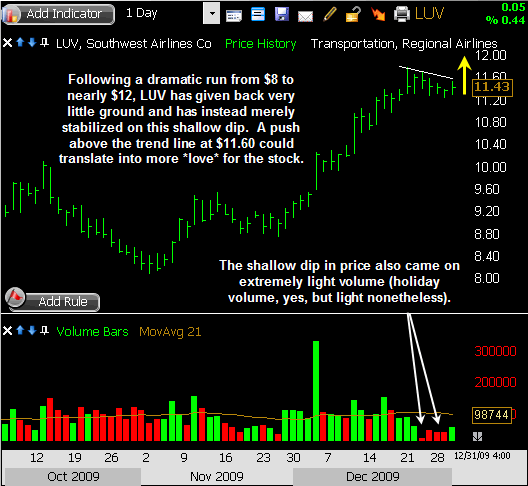Search Results for 'traders'
Reminiscences of a Stock Operator – Annotated Edition
Trading books are among my favorite to read, and I’m always on the lookout for a good one. The ones I like the most aren’t of the how-to nature, given that I’ve been a full-time trader for so many years. Instead, I really like those that get inside the heads of great traders.
I’ve pointed out my favorite reads in this category before, and that hasn’t changed. I still re-read them each year, and I either pick up new lessons or am reminded of timeless lessons each time I go through them. It’s a good investment of my time.
Perhaps at the top of the list is Reminiscences of a Stock Operator by Edwin Lefévre. My original copy is marked up from cover to cover where I’ve underlined portions of the text and made my own notes in the margin.
It’s based on real-life trader Jesse Livermore, but technically the book is fictional. Having read several other books by and about Livermore, this one does chronicle much of his trading past in an accurate fashion. However, I’ve always wondered about the facts behind the book and have wanted to know more.
So, when I was asked if I’d be interested in receiving a copy of the new Annotated Edition by Jon Markman, I jumped at the chance. After having read through it in the past few weeks, I’m impressed with it to say the least. Here are a few of my favorite takeaways from the book:
- Foreword by Paul Tudor Jones. Need I say more? A Market Wizard weighs in on why this timeless classic is among his favorites, including an in-depth Q&A in the back of the book.
- How Lefévre got Livermore’s story. I had wondered how Lefévre told Livermore’s stories with such accuracy and keen insight, and it’s clear their combination created a better work than either of them could have told individually.
- Explanation of Livermore’s ‘hunches.’ The book helps explain how a pro like Livermore can act boldly when he felt the urge to go big, based on pattern recognition and his experience as a tape reader.
- Selected quotes by chapter. Dozens of snippets from the book which could each be taped to my monitor on any given day, such as: “Remember that stocks are never too high for you to begin buying or too low to begin selling.”
- How Livermore manipulated stocks. It was interesting to see how Livermore shifted from a trader to an ‘operator.’ It’s an art form how a whale like him can accumulate and distribute large positions, and additional light was shed on how and when he made his big moves, minimizing slippage along the way.
This new Annotated Edition is filled with side notes, insights, and the historical context in which the events took place – right alongside the original text of the book. Cultural settings are explained, and economic and political circumstances are discussed. Backgrounds of key characters are highlighted, helping to further clarify each scene.
The photos and detailed descriptions of the conditions under which Livermore was trading also shine considerable light on each circumstance. As a result, I not only learned some interesting history of the market, but along the way I also gained some valuable, timeless insights to apply in today’s trading environment.
Thank you Jon for sending me a copy of the book! And in case some of you haven’t read this classic, pick up a copy of it today – I have no doubt it’ll quickly become your favorite.
Trade Like a Bandit!
Jeff White
Are you following me on Twitter yet?
Video Review of the Indexes 1-24-2010
Last week we saw the market closed on Monday, making for a holiday-shortened week of trading. That certainly didn’t translate into quiet action, as traders made every day count.
Tuesday’s upside tested resistance, but without a breakout. From there, the sellers took control, raising cash more and more aggressively as the week progressed. In the end, steep selloffs made the difference with each of the indexes giving up short-term support zones with ease.
The downside reversal reminded the dip buyers who have been so persistent for 10 months that the market’s still able to move in both directions. Whether they learn their lesson this time or not remains to be seen, but it should bring continued volatility in the weeks ahead – and that’s a good thing for traders like you and me.
As we head into a brand new week of trading, let’s examine some important levels in the indexes to keep an eye on in the days ahead. That will have the greatest influence on how individual stocks are going to move, so it’s where the trading week begins.
This clip was also posted over on the Trading Videos site (as always), and perhaps you’ve seen it there – but in case you didn’t, I wanted to put it here on the blog for you.
Let me highly suggest clicking the “HD” on the video player and then going full-screen for best quality.
Thanks for stopping by and I’ll see you here soon with more.
Until then… Trade Like a Bandit!
Jeff White
Are you following me on Twitter yet?
Prepare for Anything
On several occasions in recent years, I’ve taken a spring trip with my dad and some friends to Arizona to play golf for a few days. I love the desert, and it’s fun to spend some time with the guys and make a few birdies (let’s not talk about the bogeys!).
Around Scottsdale, and particularly to the north of town, it’s quite common to see single-engine planes buzzing around the skies. Maybe it’s the great weather and silence of being on the golf course that made me notice them, but they seem to be everywhere. They’re pilots in training, and they’re starting small before they work their way up to something larger (like perhaps, something with more than 1 engine!). I respect that approach, and we’ll touch on that shortly.
But one thing that really caught my attention is that they actually shut off their engines – on purpose – over and over. What? It’s one thing to hop in that little thing with what sounds like a lawnmower motor on it, but hey, it’s no glider. Why would they do this intentionally?
They’re creating stall conditions and learning to recover. Learning to purposely manage a malfunction in a controlled environment (well, partially) helps them avoid panic should it ever happen unannounced. Eventually, they’ll become the kind of pilot I wouldn’t mind flying with.
From One Cockpit to Another
As a trader, sometimes that malfunction happens without warning. Sometimes right after an entry is made, the position rips right against you, perhaps even before you’ve had time to place a stop. Sometimes it’s an overnight trade which has unexpected or unscheduled news hit which causes the stock to gap against you, perhaps even beyond where you had intended to exit in the event of a failed trade. It’s painful and shocking, and more often than not, it results in panic for the untrained trader.
So how do you deal?
It’s almost impossible to mimic the emotions that go along with such a situation, but here are a few simple things you and I can do in order to avoid panic.
1. Expect it to happen. That doesn’t make us negative thinkers, mind you, but rather traders who are mentally prepared for anything – including the worst-case scenario. After all, if we’re prepared to face the worst, what could possibly cause us to panic? The point here is that through logical thinking as well as visualization, unexpected events and adverse moves can be mentally rehearsed to the point that when it does happen, we’re focused on the solution rather than the problem.
2. Keep a level head. By doing #1, we’re freed up to maintain our wits. Throwing a temper tantrum or freezing up entirely is only going to make it worse. The deer in the headlights stands motionless (at least here in south Texas), which means it’s up to the car to change course if something awful is to be avoided. Don’t be the deer – you can’t base your protection on hope that the stock will change course for you. Cooler heads will always prevail, so exercise self-control when you find yourself in a sticky situation and your mind will be available to strategize.
3. Expect to survive. Trusting that you’ll be alright in the long haul will help keep things in perspective, just as they should be. What might feel like a catastrophe to the inexperienced trader might be a little unsettling to you, which is something you can absolutely recover from. At the worst, it’s one bad trade out of your next 1000 trades, so consider it a spot on the windshield to look beyond rather than something worthy of doing more damage to you than it already has.
4. Never allow one trade to be too important. This of course takes into account position sizing and position risk, because the financial hit is the one that comes first. Putting on trades which are larger than they should be is nice when they work, but when they don’t, look out. Staring at a loss which is bigger than you’ve faced before will bring instant regret. Similarly, trading within one’s limits also means that no trade is ever emotionally too important. The aftermath which follows a big loss can be more emotional than financial, so walk the line carefully when choosing position size, and you’ll avoid a tailspin.
The market will dish out surprises from time to time, no doubt about it. Train yourself to expect it, and mentally rehearse some ways you’ll respond when it happens. You’ll ultimately feel as though you’ve been there, and your second reaction (following ‘oops’) will be a remedy rather than crippling anxiety and fear.
Trade Like a Bandit!
Jeff White
Are you following me on Twitter yet?
Keys From a 6-Month Streak
Anytime you find yourself in the midst of a streak in your trading, it’s worth paying attention to. When you’re winning, you need to find out why.
A few years ago, I was fortunate to put together a 13-month streak of consecutive net profits (profits every month for 13 months). The longer the streak continued, the more I thought about it, and the better it made me to sort of ‘observe myself’ during that run. I made note of not only my routine and the kinds of plays which were working, but I also included my thought process and the mentality I was bringing to the table. I still occasionally reflect on those notes to stay sharp.
For the past 6 consecutive months, we’ve put together net profits in each month over at TheStockBandit.com (July, August, September, October, November, December). Results can be found here.
Although I am trading confidently, I’m not telling you this in order to boast. I’ve been at this long enough to know the market will serve up a healthy dose of humility when it’s needed!
Rather, I want to share with you some of the things I’ve been focused on in recent months that have brought consistent success, hoping it can improve your own process.
Here are 5 Keys I’ve taken from the past 6 months:
* Be Patient. I have not forced trades. When setups were plentiful, I would get more aggressive. Hence the reason some months had more trades than others. When the setups were harder to come by, I was willing to wait. The year is long, and there will be an abundance of opportunities, so there’s no need to try to make something happen. Watching and waiting for the must-take setups to come along pays off.
* Picky is Good. Before committing capital, I have been requiring high-quality chart patterns and situations which carry a nice potential payout. Lowering your standards to second-rate setups will result in overtrading and a higher barrier to success, and trading is already hard enough without that. You deserve the best, so require it if you’re putting money into it.
* Take the Conservative Route. The occasional home run is nice, but they don’t always happen on purpose. In fact, swinging for the fences will send you right back to the dugout more often than it’s likely to put you on base. My approach has been to hit singles and ring the register more often, paying myself when I catch a nice move, but now wearing out my welcome. The conservative route brings with it consistency and confidence, two things I strive for.
* Have Directional Flexibility. A willingness to trade both the long and short sides has led to my booking winning trades on the short side in every month during this run, despite the fact that the market has pushed relentlessly higher. This was extremely helpful during July, September and October when we saw some brief market pullbacks as well. Looking for outlier stocks can pay off, both in terms of winning trades and the occasional hedge to long positions.
* Monitor the Behavior of Positions. Never trust a skinny chef, or any stock you hold a position in. I don’t mind giving trades some wiggle room, but I do keep a close eye on the price action and how volume corresponds with it. During this run, whenever I started to notice a discrepancy between what I expected to happen and what was actually happening, it was a clue that an adjustment may be necessary. Every stock has some personality associated with it, so if that begins to change, give it your attention and be willing to modify your trade parameters.
The next time you find yourself in the midst of a nice run, take a little time to see what you can learn from it. Take note of what’s working and what isn’t, do more of that which is working, and keep plugging along. It will help you not only perpetuate the process you’re already in, but it’ll help you return to the same mode later on.
Trade Like a Bandit!
Jeff White
Are you following me on Twitter yet?
LUV Still Adored
There’s a common desire among traders to “buy the dip” when given a chance, and I’m here today to show you one such opportunity. The idea of picking up stocks on even a minor discount within the context of a proven trend is indeed a good one – so let’s take a look at one chart of interest.
LUV, like many other airline stocks, has enjoyed quite a run over the past several weeks. The day to day action has been consistent, and although it hasn’t seen many huge individual days, the net result is an impressive 39% run over just the past 2 months. It may not be done either.
Even in the wake of the Christmas Day “underwear bomber” attempt (does that title ‘crack’ up anyone else the way it does me?), the stock saw only a very shallow decline before posting another gain to finish out the year.
The result of the dip has merely been some quiet consolidation on light volume, which has also created a small descending trend line just above current prices. A push north of that trend line at $11.60 could mean yet another takeoff for the stock (pardon the pun), so it’s on my radar for a play.
Here’s a closer look for you:
Trade Like a Bandit!
Jeff White
Are you following me on Twitter yet?
Video Review of the Indexes 1-3-2010
Despite a very minor hiccup to end 2009, the bulls made a great showing when it was all said and done. The early action was extremely ugly, but the March-December rally made the ultimate difference and solid gains were posted across the board.
And the run may not be done yet. After all, uptrends are still intact for each of the major averages, and that certainly deserves our respect. But, it is indeed a new year, and there are no rules which the market must follow. That said, we as traders must be prepared for anything to come along, whether that means a continued melt-up, a steep correction, or anything in between.
As we head into a brand new week of trading, let’s examine some important levels in the indexes to keep an eye on in the days ahead. That will have the greatest influence on how individual stocks are going to move, so it’s where the trading week begins.
This clip was also posted over on the Trading Videos site (as always), and perhaps you’ve seen it there – but in case you didn’t, I wanted to put it here on the blog for you.
Let me highly suggest clicking the “HD” on the video player and then going full-screen for best quality.
Thanks for stopping by and I’ll see you here soon with more.
Until then… Trade Like a Bandit!
Jeff White
Are you following me on Twitter yet?
How to Lose Like a Winner
I recently heard that in relationships, you can be happier if you choose to accept the whole person. The idea is that instead of trying to weigh everything you like vs. everything you dislike, accepting them as generally positive is a better decision. Thankfully, my wife does that for me, looking beyond my numerous flaws and allowing my positives to overshadow them.
If you stop to think about it, this is a pretty good way to measure everything and everyone in our lives. Staying objective about ‘it’ lets you recognize that overall it’s a positive thing.
The successful trader is no different. He looks at his overall trading operations for a given timeframe, and if the profits are there, then the mission was accomplished.
That’s not always an easy thing to do. In fact, I’d suggest that your inability to view your trading in that general light could put you in the popular camp of those who can’t cut it in this game. It’s much more natural to allow specific trades to stand out and influence our line of thinking. It can result in a directional bias, a pet stock, or a slew of other closed-minded patterns of thinking – all of which can lead to the destruction of one’s account.
What we want to do is to win. And if winning is defined as overall profitability, then winning will involve some losses along the way. You and I have to be able to lose like winners!
Here are 4 ways you can do that:
1. Allow no single trade to define your trading. Dwell on it for a short time if you must, but then move past it whether it was a big win or a disappointing loss. You might have put a lot of preparation, concentration, and capital into that one great idea, but it’s over now. Either pat yourself on the back for a trade well done, or brush yourself off and get back on your feet. Think about how you can use it to your advantage. Maybe you fattened your account with the profits from it, or expanded your comfort zone because of it. Great. Get back on your horse.
2. Win the war, not every battle. Put on individual trades which have sensible risk/reward, but place emphasis on your overall operations rather than each individual effort. Basically, see the forest and not just the trees! Accept that there will be some some losing trades, perhaps frequently, depending on your timeframe, and aim to overcome them with larger or more frequent winners. The point of taking this step is not to go to battle with every trade due to the mindset of having to be correct. Accept it when you are wrong, and no single ‘battle’ will ever sink your ship.
3. Cast fear aside. Fear is arguably our biggest enemy in trading. It can cripple you if you allow it. This is manifested in ways like trading so small that a win or loss has virtually no impact, or maintaining stops so tight that the stock isn’t able to fluctuate naturally without shaking you out. Those who spiral down the drain of losing are often times gripped by fear. Don’t allow that to be you. Maintain a healthy respect for the market, but don’t be afraid of it.
4. Learn from every loss. You’ve paid the tuition, so you might as well get the lesson! This makes a loss something you can still gain from, and every winner does it. Always seek out ways to increase your trading knowledge, whether through specific education like a stock trading course or simply picking up on subtle behaviors in price action that are starting to surface. Is the market starting to change, or are you refusing to avoid methods which aren’t paying off? Keep an open mind, always look for the lesson, and let the long-term losers be the stubborn ones.
Lose like a winner this week, and you’ll have more to show for it.
Thanks for stopping by and I’ll see you here soon with more. Until then…
Trade Like a Bandit!
Jeff White
Are you following me on Twitter yet?






